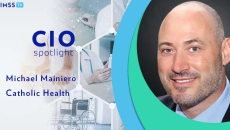Privacy & Security
SPONSORED
This article provides actionable strategies that healthcare organisations can use to optimise their shared mobile device programs with the technology and management practices needed to achieve high-quality, patient-centred care.
SPONSORED
The current U.S. healthcare system may be strained by a growing workforce shortage, financial constraints and an aging Baby Boomer population, but screening and early disease detection programs offer much-needed support. They can help deliver more efficient and cost-effective treatment plans and better patient outcomes, thereby ensuring sustainability for healthcare providers.
At HIMSS25, Claroty's Ty Greenhalgh and St. Luke's University Health's Mike Powers will unveil the HSCC's updated MC2 Framework and address challenges in negotiating medical device cybersecurity contract provisions.
Also, NSW Health has appointed a new CIO.
The organization shines a light on technical and other challenges healthcare providers face when implementing patient privacy consent to comply with healthcare data exchange requirements in a new landscape paper.
Etay Maor, Cato Networks' chief security strategist, will demonstrate jailbreaking, prompt injections and other real-world attacks at a HIMSS25 session focused on the use of artificial intelligence in healthcare.
Bernke Papenburg, program manager of Robotics at Rijnstate Hospital in the Netherlands, previews her HIMSS25 talk, where she will discuss the challenges associated with deploying digital technology in a hospital setting.
The chief digital and information officer discusses his to-do list for the year ahead. He offers thoughts on the trends that will shape 2025, including cybersecurity, AI and automation, and patient experience.
South Korea's biggest hospital reportedly saved $1.4 million in operational costs after consolidating and virtualising its IT servers.
He discusses the particular cybersecurity challenges for post-acute care settings, and previews a HIMSS25 session that will help IT leaders at nursing homes, home health and assisted living groups can improve their privacy and security postures.










